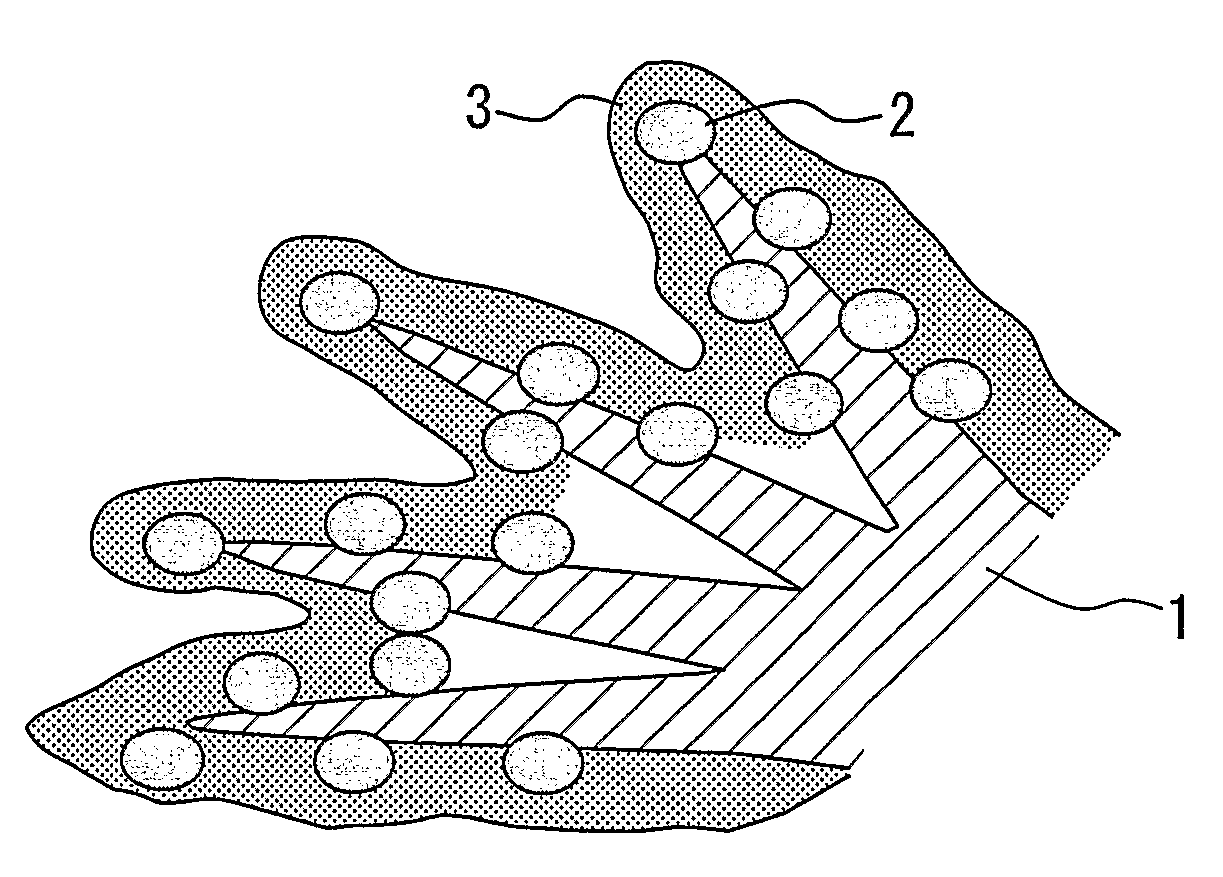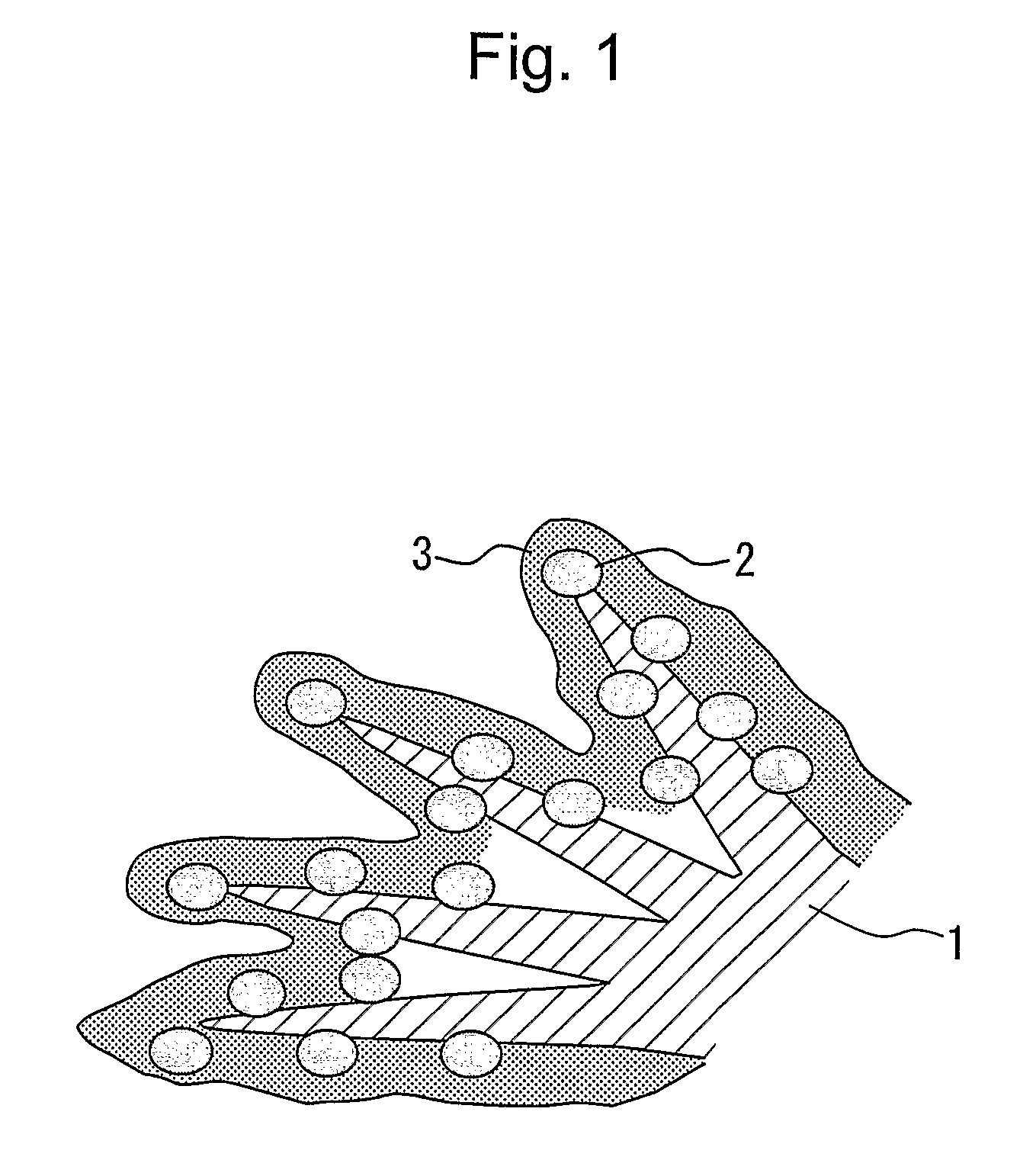Electrode catalyst for fuel cell, process for producing the same and solid polymer fuel cell comprising the same
- Summary
- Abstract
- Description
- Claims
- Application Information
AI Technical Summary
Benefits of technology
Problems solved by technology
Method used
Image
Examples
example 1
[0066]High purity carbon nanohorns were prepared and chloride, nitride and / or organic compounds of Pt, Rh, Co, Cr, Fe, Ni were prepared as metal sources. Ethylene glycol was prepared as polyol.
[0067]The carbon nanohorn sample was pretreated with a hydrogen peroxide solution to activate the surface. The catalytic metal was supported on the support through a polyol process using polyol having low surface tension. The amount supported of platinum was set to 46% Pt / CNH and thus Pt has an average particle size of 2.8 nm. The reduction temperature was 140° C. and the reduction time was 8 hours. After filtration and drying, baking was performed in inert gas at 100° C. as a post-treatment. The resulting electrode catalyst was formed into ink by a conventional method and coating was performed by a cast method to prepare a catalyst layer of MEA. A TEM photograph was taken and the active Pt area and the O2 reduction current of the product were measured by a rotating disk electrode (RDE) method...
example 2
[0070]Experiments were performed in the same manner as in Example 1 except that the amount supported of platinum was set to 60% Pt / CNH and thus Pt has an average particle size of 3.5 nm. A TEM photograph was taken and the active Pt area and the O2 reduction current of the product were measured by the rotating disk electrode (RDE) method. The TEM photograph is shown in FIG. 5.
[0071]The active Pt area of the product was 0:38 cm2 / μg·Pt and the O2 reduction current was 0.110 A / mg·Pt as measured by the rotating disk electrode (RDE) method.
example 3
[0072]Experiments were performed in the same manner as in Example 1 except that the amount supported of platinum was set to 70% Pt / CNH and thus Pt has an average particle size of 4.8 nm. A TEM photograph was taken and the active Pt area and the O2 reduction current of the product were measured by the rotating disk electrode (RDE) method. The TEM photograph is shown in FIG. 6.
[0073]The active Pt area of the product was 0.27 cm281 g·Pt and the O2 reduction current was 0.105 A / mg·Pt as measured by the rotating disk electrode (RDE) method.
[0074]FIG. 7 shows the relationship between average particle sizes of Pt and active Pt areas obtained in Examples 1 to 3. Likewise, FIG. 8 shows the relationship between average particle sizes of Pt and O2 reduction currents obtained in Examples 1 to 3.
[0075]The results in FIG. 7 and FIG. 8 show that excellent catalytic ability is exhibited when the catalytic metal has an average particle size of 3.2 to 4.6 nm.
PUM
 Login to View More
Login to View More Abstract
Description
Claims
Application Information
 Login to View More
Login to View More - R&D
- Intellectual Property
- Life Sciences
- Materials
- Tech Scout
- Unparalleled Data Quality
- Higher Quality Content
- 60% Fewer Hallucinations
Browse by: Latest US Patents, China's latest patents, Technical Efficacy Thesaurus, Application Domain, Technology Topic, Popular Technical Reports.
© 2025 PatSnap. All rights reserved.Legal|Privacy policy|Modern Slavery Act Transparency Statement|Sitemap|About US| Contact US: help@patsnap.com



